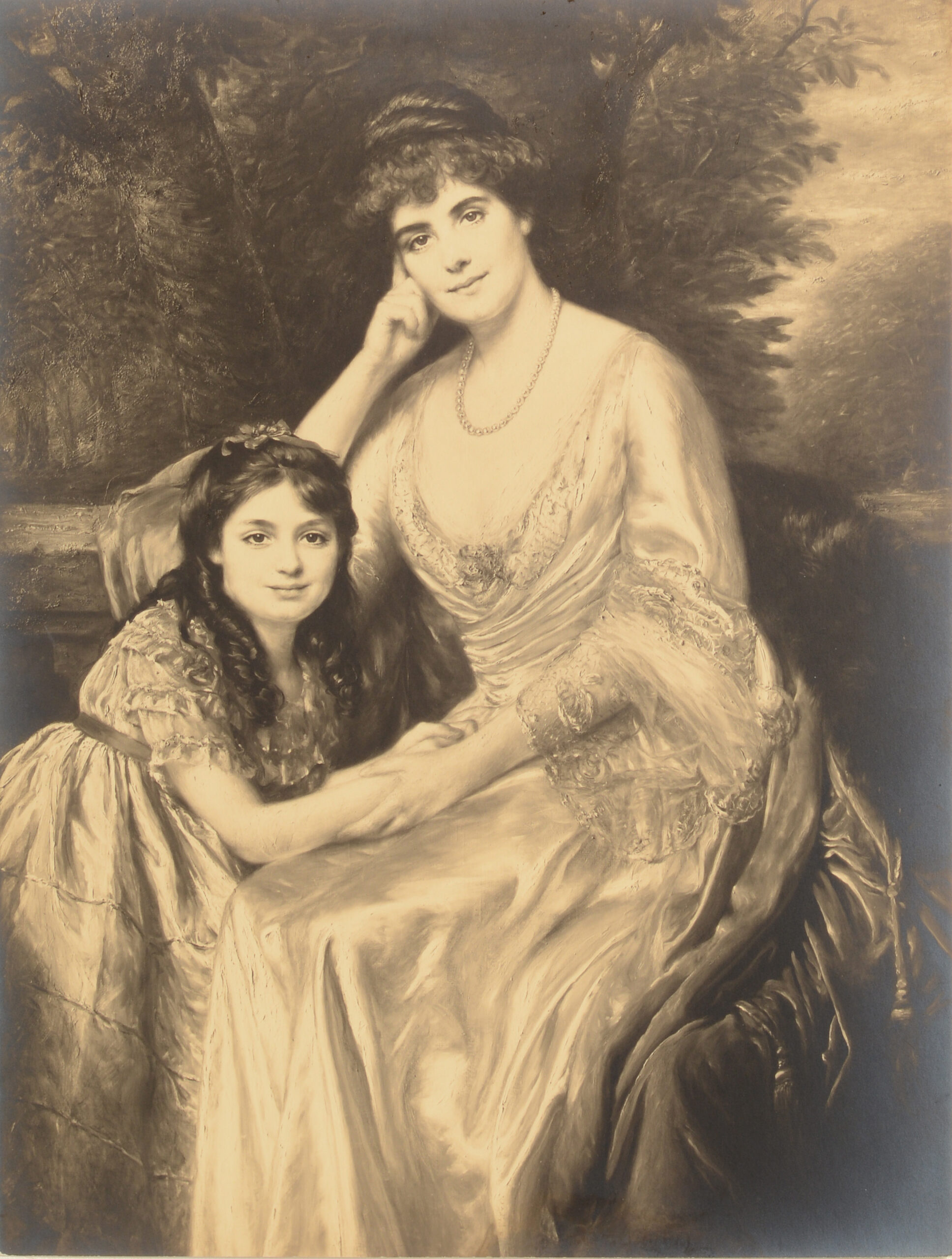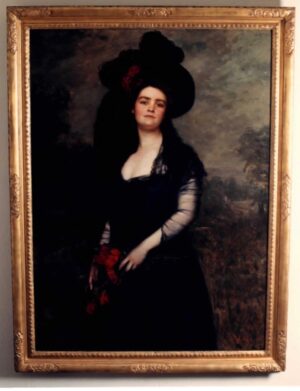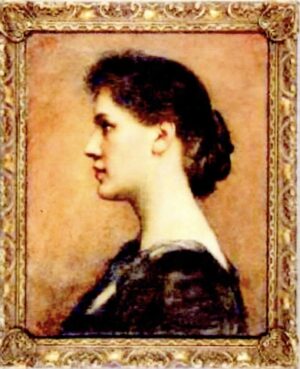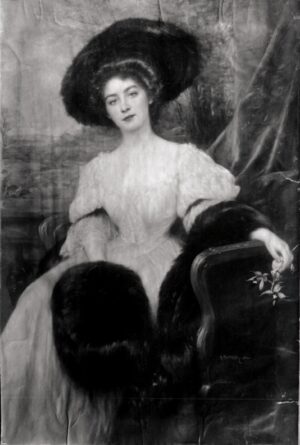Teresa Barreda was born in Lima in 1887 and died in 1972. The sitter’s husband, Felipe Manuel Adalberto Pardo y Barreda, V Marqués de Fuente Hermosa de Miranda (1860-1939) was a Peruvian diplomat, whom she married in 1905 in Lima, became accredited Minister from Peru to the United States between 1907 and 1911. She was the sister-in-law of the President of the Republic of Peru, José Pardo y Bareda. In 1925 their daughter, Ana Teresa (1907-1996) married Luis Maria Ruiz de Arana y Martin de Oliva, XIV Duque de Sanlucar la Mayor (1901-1936), and later Amancio Rodolfo Alcorta Mansilla (1903-1962). In 1944 Teresa renounced the title of VI Marquésa in favour of her daughter and her daughter Ana Teresa became VII Marquésa de Fuente Hermosa de Miranda.
—
Several relevant letters are in the artist’s papers. The first is from their cousin Maria de Barril, the niece of Frederic Barreda, a rich Latin-American emigré in New York who wanted to break into Society at any price, who also owned a house called Beaulieu at Newport, until in 1893 disaster overtook the family’s fortunes. Miss de Barril (who died in 1919) became a pioneer social secretary to New York society, particularly Mrs. Astor, working from the Hotel Stratford. Her letter, dated November 22, 1917, reads:
‘Dear Mr. Muller-Ury
My cousins are enchanted with the portrait. I am so glad you can come tonight! I enclose ticket; I think it is safer to send it to your studio.
Sincerely yours, Maria de Barril.’
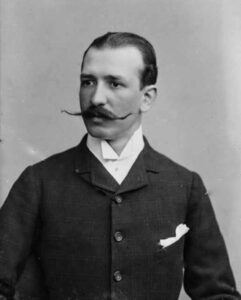
The sitters’ husband and father Felipe Pardo y Barreda.
On December 29, 1917, the sitter’s husband wrote as follows:
‘Cher Monsieur Muller-Ury.
C’est avec le plus grand plaisir que je vous envoie mon cheque sur le Guaranty Trust Co. pour cinq mille dollars en payement du beau portrait de ma femme et de ma fille que vous avez fait avec votre grand talent et exquisite gentisse.
J’espere vous voir bientot pour vous souhaiter une bonne nouvelle annee.
Mille amities
Felipe Pardo.’
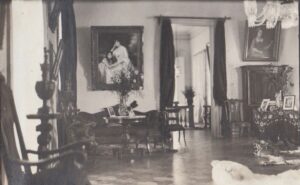
A photograph of the room in the Lima home of the sitters.
On March 24, 1918 the sitter wrote to the artist:
‘Dear Mr. Muller-Ury,
Since I arrived I have been thinking so much of writing to tell you all about the portrait: how well it arrived, what an ornament it is in my drawing room, and how much everybody admires it, but I have been so busy with friends and fixing my house that I have had no time to write. I have shown to all my friends the fotograph you gave me and it has really been a pleasure to me to see that everybody appreciates so much your work. Very soon I will send you fotographs of the drawing room.
My eldest brother is not going to the United States, he will go as charge d’affaires to Rome —-
I enclose a letter from Ana Teresa. I wonder if you will understand her extraordinary writing, she spells English words as they sound in Spanish.
I hear it has been fearfully cold in New York after we left. I hope you have been warm and comfortable —
Felipe joins in sending you kindest regards and we hope to hear from you sometimes, as we shall always be interested in your life.
Yours sincerely, Teresa de Pardo.’
A letter in the Knoedler Library dated November 9, 1917 (Domestic Letterbook October 9, 1917—December 12, 1917, No. 259) from Charles Henschel to the artist says that he had been waiting to hear from Muller-Ury about the frame of Mrs. Pardo’s portrait and that Mrs. Pardo had said that the artist would go to them to organize this.
American Art News, January 19, 1918, described the picture as follows: ‘This portrait of a beautiful woman and her more beautiful little daughter, in its rich color quality, recalls some of the best work of Francois Flameng. The composition is harmonious, from the sweet abandon of the child to the elegant pose of the mother in her gown of shimmering satin, outlined with gold embroidery against a background of dark foliage.’
The duotone photograph in the artist’s papers bears the stamp of Mary Hopson.


